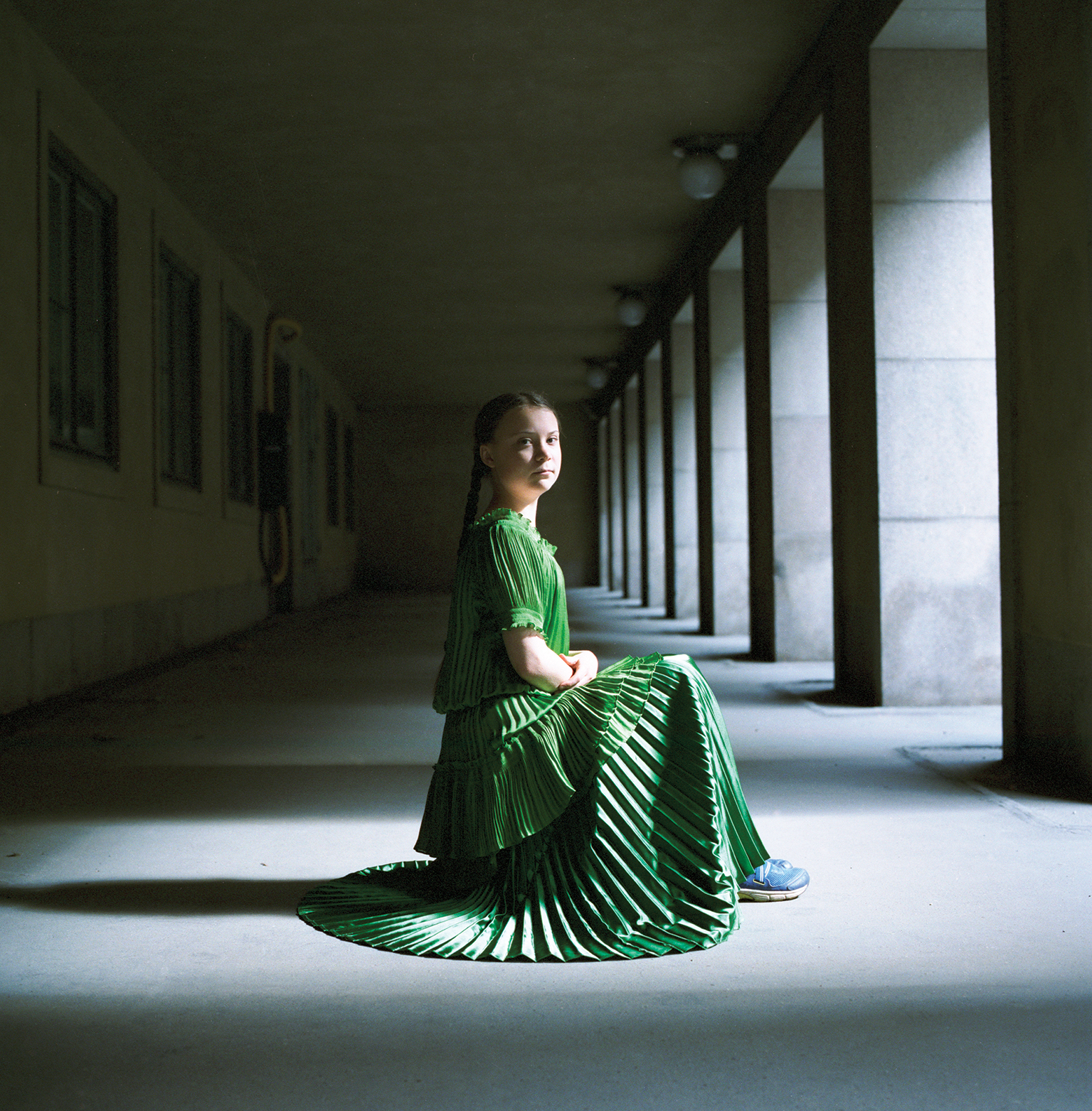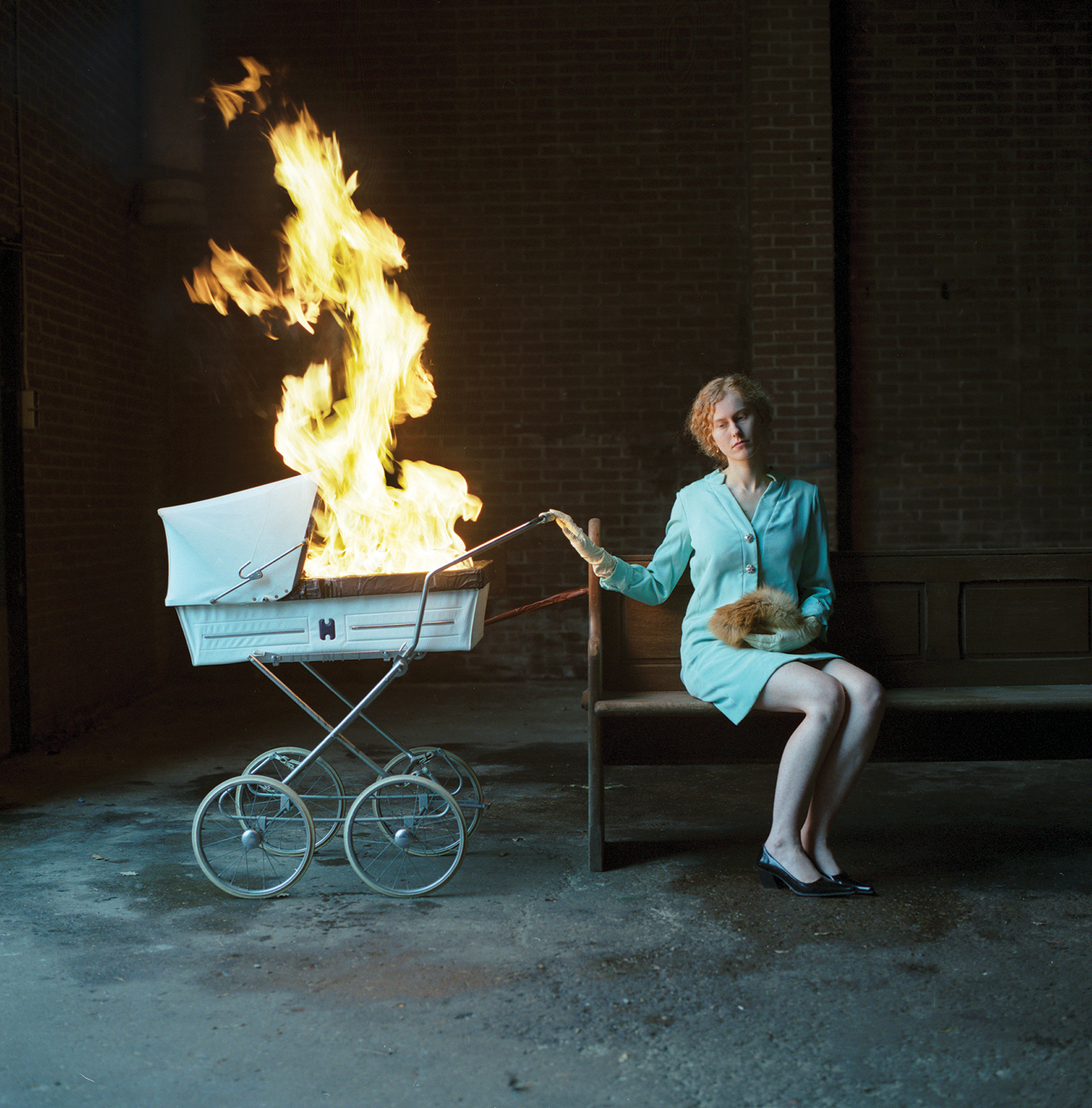How I capture the essence of youth: acclaimed photographer Hellen van Meene talks about her portrait work
In her eye-catching portraits of adolescent girls, Hellen van Meene focuses on their youth, uncertainty and dreams for the future


Hellen van Meene was born in Alkmaar, Netherlands, in 1972 and studied photography at the Gerrit Rietveld Academie in Amsterdam. A professional photographer for almost 30 years, Hellen’s work has been exhibited around the world, including at the Guggenheim and MoMA in New York. She received an Honorary Fellowship from the Royal Photographic Society in 2016 and won the Victoriefonds Visual Arts Culture Prize in 2022.
Van Meene's photographs embrace an aesthetic of their own, appearing contemporary while at the same time, seemingly being from a different era. Influenced by 17th Century paintings, her work captivates the viewer, while embracing her own visual language.
In each photograph, her aim is to capture the precious momentum of youth, which is characterized by openness, uncertainty, and dreams for the future. Her use of natural light, sensitivity towards the models and absolute attention to detail all help to create an eye-catching interplay. The girls’ facial expressions are particularly striking. At times, her subjects seem to be lost in their own thoughts, while at others, they almost appear to be challenging the viewer. Occasionally, some of her subjects even have their eyes closed, but through her skillful staging, each photo seems to stop time within itself.
Van Meene has been working with some models for years, and as they find their way into adulthood and evolve, so does her photographic work. In her latest series, she goes one step further, including an element of fire in her work for the first time.
Work courtesy of: James Freeman Gallery, London; Galerie Fontana, Amsterdam; Yancey Richardson, New York
Interview
Hellen, your work is distinctive and highly creative... to what extent do you involve yourself in the photographs?
People keep asking me if portraiture is what I really do. The funny thing is that there are people in my photographs, but they’re not really ‘portraits’ as such. It’s not that I am aiming to make a precise document of the person in front of me, but rather more like a translation of someone I see in front of me, and whom I translate into something different. Of course, they recognize themselves in the image, but sometimes people can change a lot.
For me, making a portrait is so much nicer than doing a still life because the person reacts to what I ask of them. You are working with chemistry, charm, and everything you can do to create the way you want to take your photograph.
From the moment you see someone walking in the street and you ask a person to pose for you, to a later moment, in which you may change the clothes, find the right lighting and background, all this is part of what makes a photograph. It is a whole interesting process that takes place before the end result is really there.
Digital technology is a constant presence these days. What motivates you to still shoot analogue and what can digital photographers learn and adapt from your way of working?
I only have 12 photographs per film and if I shoot too fast, I have to stop and change the film, when the model has finally relaxed. This causes my work to proceed with care and focus on each shot taken. With digital, this same level of concentration is not demanded as you can easily take 100 pictures in one go. The result is a lack of focus on good photos.
As anyone starting with digital knows, it’s not an argument we can easily refute. Many digital disciples when starting out in photography occasionally confuse a camera with some form of visual machine gun. Instead, you want to take your time and make sure everything in the image is right. It is important to remember that the focus should be on the quality of every individual photo.
Your works are created exclusively with natural light. What are the advantages of this in relation to your way of working and the effect it has on your images?
When working in the studio, you have to create and control the atmosphere with light by yourself. You are forced to pay a lot of attention to the exposure and interactions with the model are neglected. The creative concentration has to be on the model and how the light affects it – does the light fall softly on the skin? Are the shadows on the face too harsh or distracting from the image? This way, I can fully focus on the person in front of me and work with the natural light and its advantages without actually compromising what I’m doing.
“There are people in my photographs, but they’re not ‘portraits’ as such. It’s more like a translation of someone I see”
How do you decide who to put in front of the camera and how important is that interaction with your subjects?
It is all about the chemistry with the subject, and that counts for everyone. You have to feel inspired by them. When I am positive about someone, a lot of things happen with their personality, they open up like a flower. And this process is so interesting for me. Even though I did some still-life work last year, I will always focus mostly on people, because the interaction with my subjects is the most fun part of it.
Young people are confronted with social media now, have you noticed any change in their behaviour and self-confidence?
Young people nowadays are not so different from us when we were young or the generations that went before us. The uncertainty is always there, feeling shy, or proud or brave – the only new thing they have to worry about is social media. We didn’t have cell phones and when we acted silly among our friends, it stayed private. Now there are almost no boundaries and people share too much too easily without thinking about any of the consequences.

Get the best magazine for enthusiast and pro photographers delivered to your door or device with a subscription to Digital Photographer. Learn the hottest photo trends and techniques while getting essential advice on earning cash from your photography.
- A photographer's life: Carol Highsmith is documenting America for posterity
- Photographer tells story of capturing shy ‘spotty’ leopard
- Can shooting in natural light be this simple?
- Natural light vs flash – which is better?
The best camera deals, reviews, product advice, and unmissable photography news, direct to your inbox!

Kim is a photographer, editor and writer with work published internationally. She holds a Master's degree in Photography and Media and was formerly Technique Editor at Digital Photographer, focusing on the art and science of photography. Blending technical expertise with visual insight, Kim explores photography's time-honored yet ever-evolving role in culture. Through her features, tutorials, and gear reviews, she aims to encourage readers to explore the medium more deeply and embrace its full creative potential.







